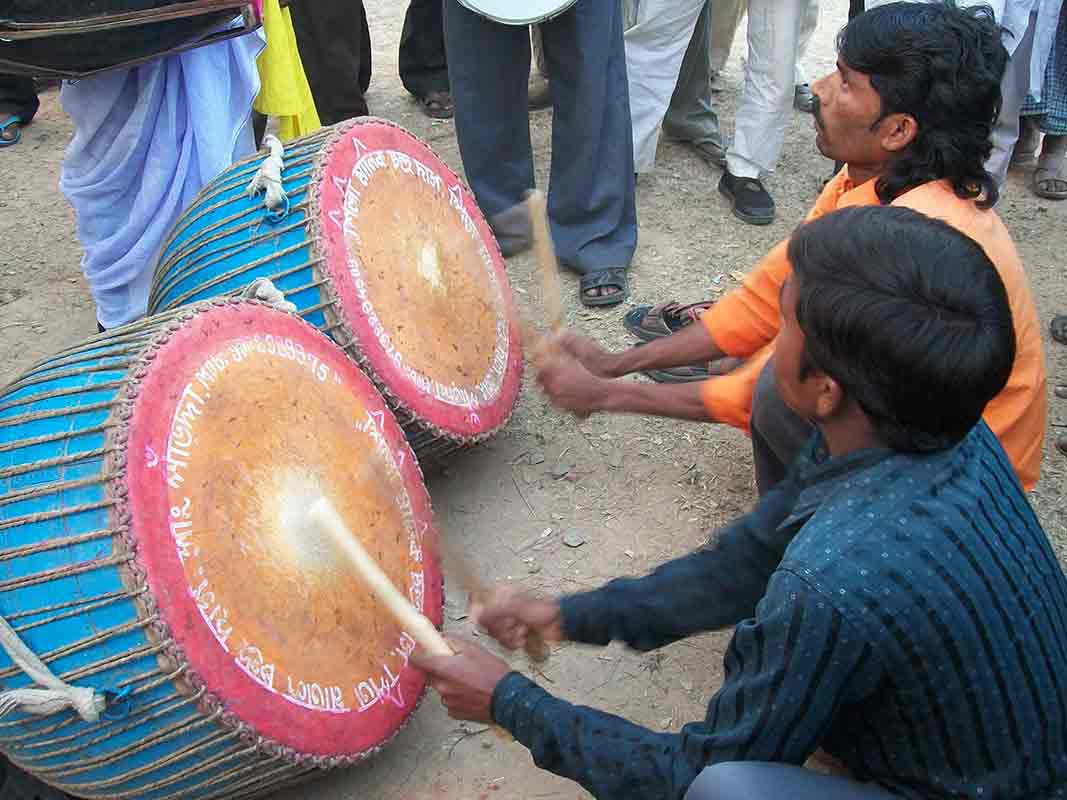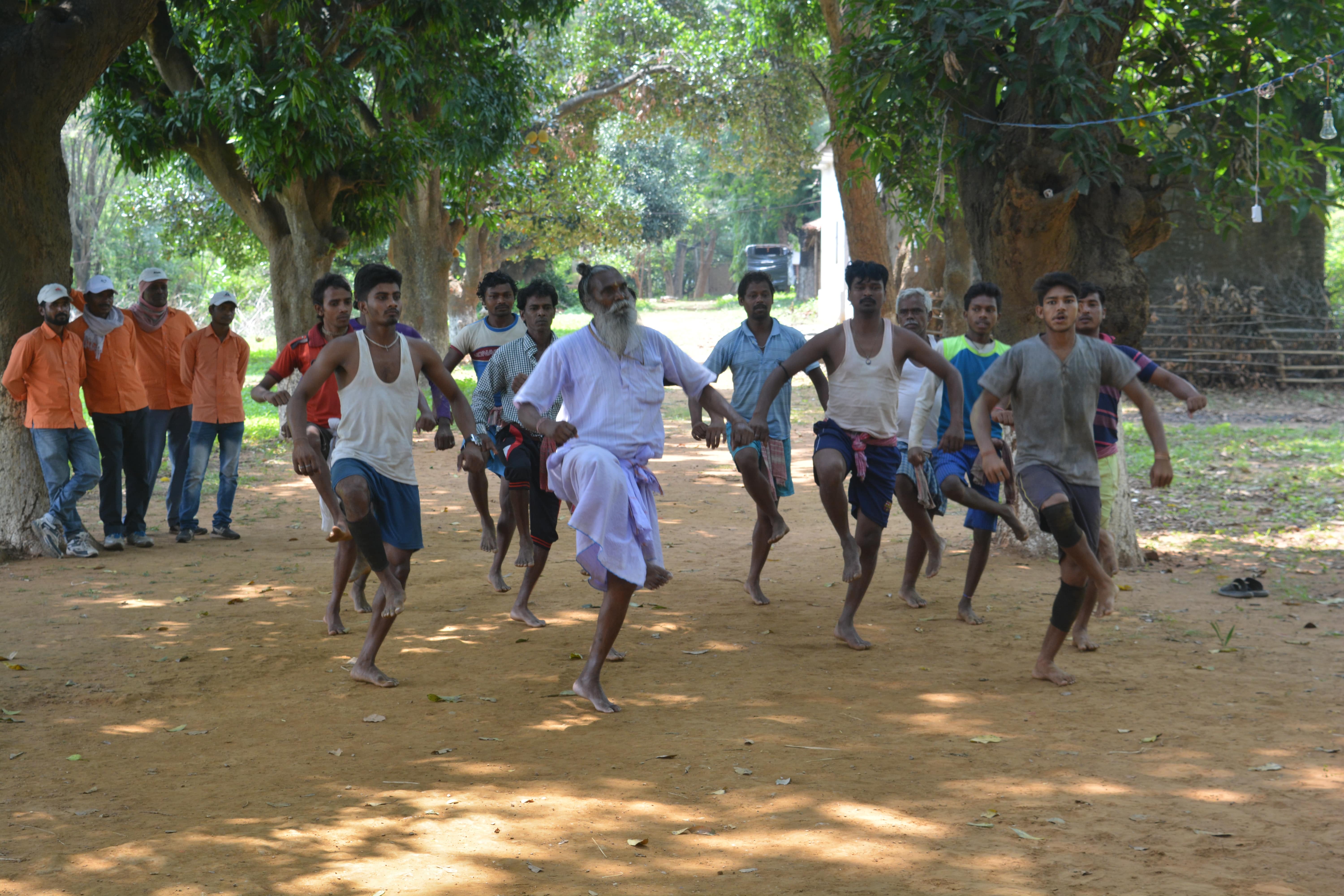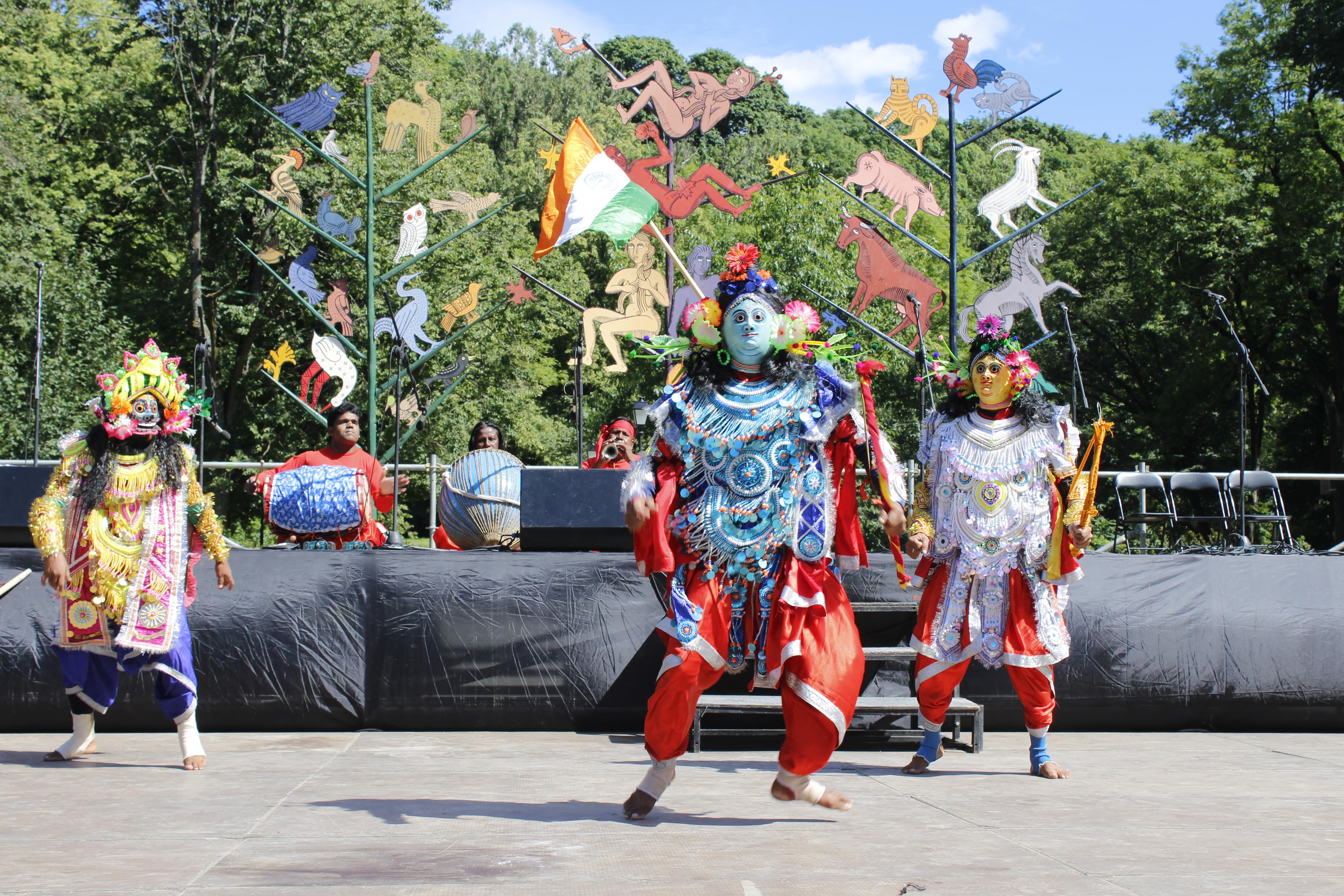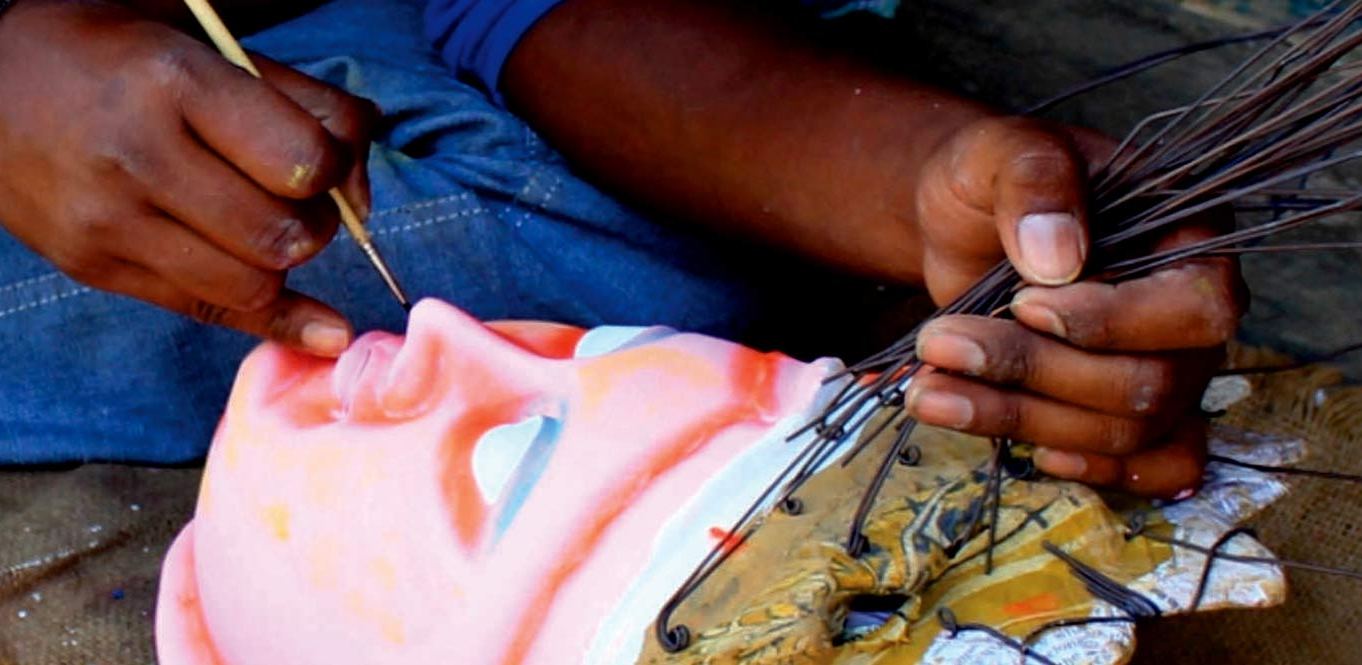

Chau dance is popular among the indigenous people of Chotonagpur Plateau region. Apart from Purulia Chau, there are two other variants – Seraikella Chau and Mayurbhanj Chau which are practised in Jharkhand and in Odisha respectively.
Chau is connected to the ritual and religious celebrations of the people in these regions. Chau is most intimately associated with the Chait Parab that is celebrated in the festive spaces of local Shiva temples in Purulia around April/May every year. Initially performed by a single dancer with no mask (Ekoira Chau), Purulia Chau was influenced by other local forms of dance found at the popular local festival of Gajan. The stories enacted by Chau dancers are mainly from the epics of Ramayan, Mahabharata, Puranic texts and others. The dancers wear ornate costumes and masks elaborately crafted mask that portrays the character of the dancer.
The masks are made by a community of rural artists living in Charida village. Generally crafts persons make masks of deities, epic and also of tribal characters. The masks are of different sizes starting from small to large ones. The tradition of making Chau masks started in Charida around 150 years back during the rule of King Madan Mohan Singh Deo of Baghmundi.
download chau grammer
The traditional instruments used during Chau performance include Dhol, Dhamsa, Charchari, Tikra, Nagra, Mahuri, Sanai and flute. Musical instruments are played along with dances depicting different moods and moments. Characterisation is also done with the help of music. There are different music overtures for Arjuna, Ramachandra, Lord Shiva and different other characters.

Every Chaal or gait has typical foot works and movements of head, shoulder, hand etc. that bring out the innate features of the characters. Dev Chaal is associated with Gods or the good powers. Bir Chaal is associated with the brave and valiant characters. Asura Chaal is associated with the evil powers. PashuChaal is imitation of movements of animals and birds like lion, monkey, peacock etc. Chau dance is known for these typical foot work and movement of head, shoulder, hand etc.

Themes of Chau dance are mainly based on epics like Ramayana and Mahabharata and Hindu Puranas. Mahishasur Mardini remains an all-time favourite play for Chau dancers. Themes were also sourced from mythological stories like Narasimha Avatar, Sabitri Satyaban, Shivapurana, Hiranyakashipu and Sri Krishna. Nowadays plays are also composed on historical and contemporary themes.

The Chau dancers wear ornate and elaborate masks and dazzling costumes made of tinsel and brocade. The masks used in Purulia Chau are elaborate and ornamental. The masks are made of clay and paper pulp with ornamentation in the headgear.